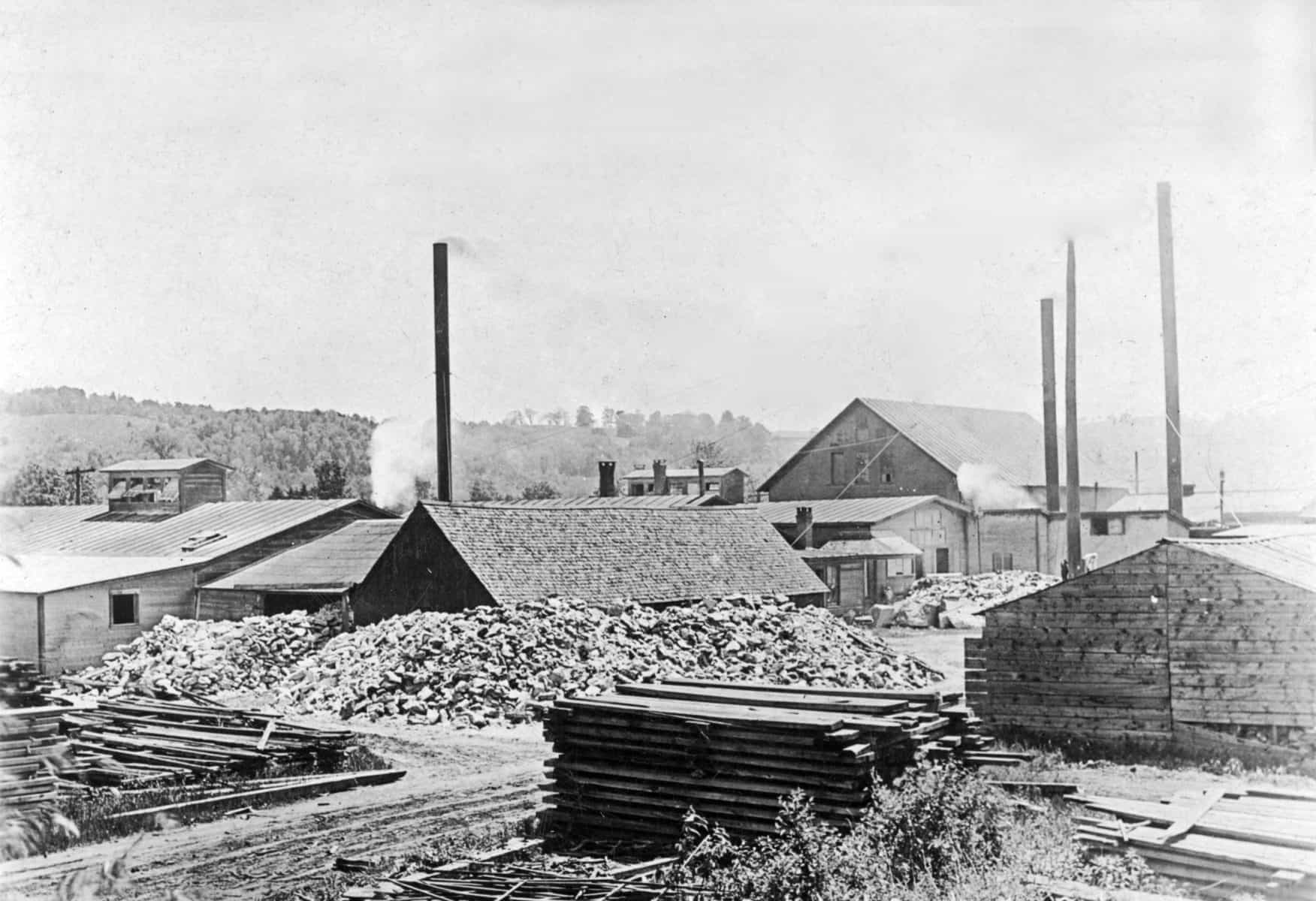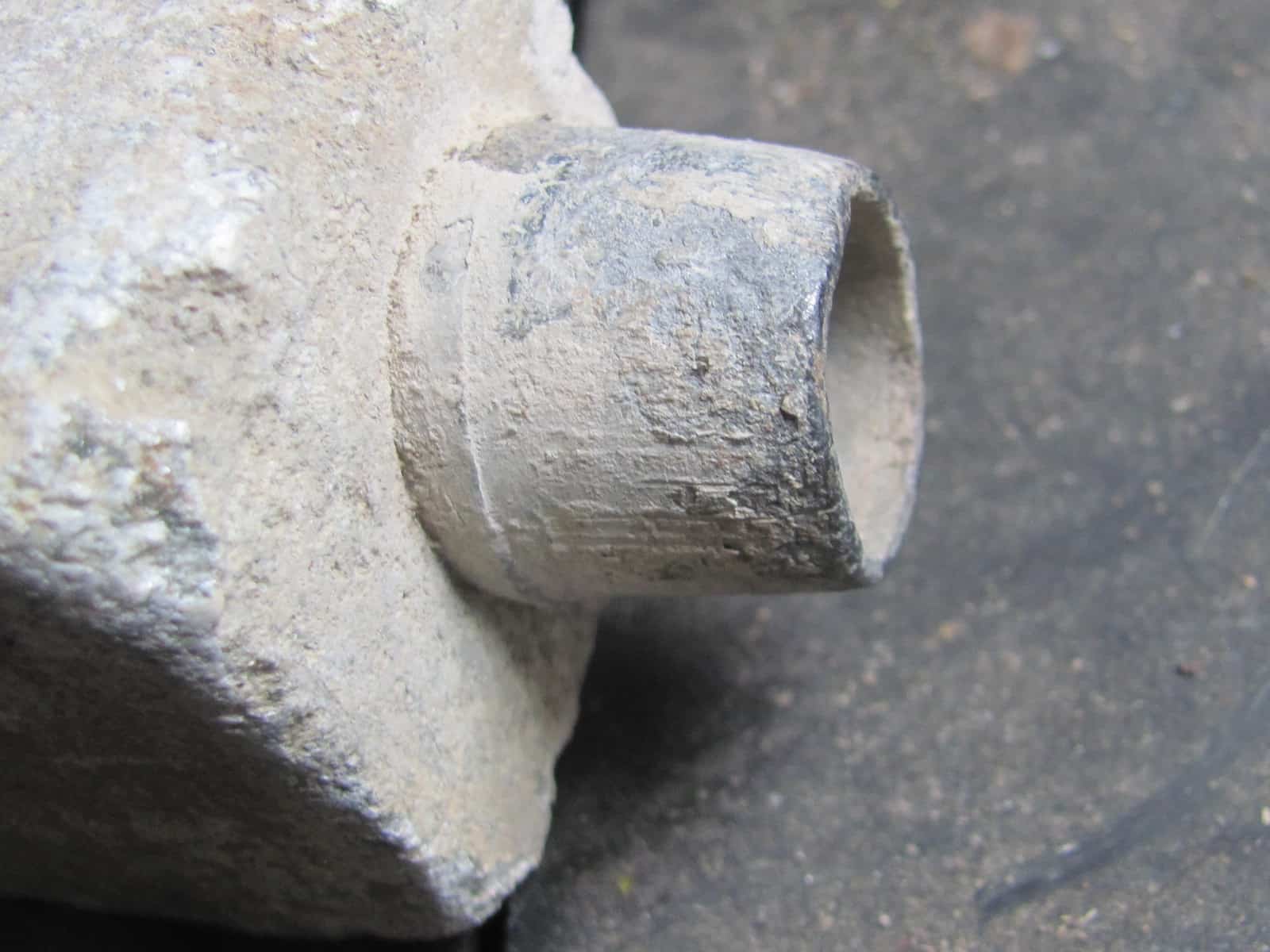
Here’s a brief history of different water pipe used in Vermont years ago. This is by no means a definitive history.
Pump logs
Pump logs were an early water pipe we used. From colonial days to the turn of 20th century, water pipe was made of wooden logs. The logs averaged eight or nine inches in diameter and were freshly cut. Balsam was the tree of choice.
Making pump logs was an interesting process. Many readers will know that a “rod” is a centuries old measurement. Read any old deed and you’ll see rods mentioned referencing distance along boundaries. A rod is sixteen-and-a-half feet.
Pump log makers used a large wood-frame bench, or a “horse,” as it was called, that secured the log. Boring the hole was done with a tool called a “pod auger.” The trick was to bore the length of the log and have both end holes centered within. This was accomplished with the pod auger. A regular hand auger of the day, with two cutting edges, would wander with or against the grain. The pod auger stayed true.
Pump logs were made in pairs. One log was eight feet long, the other, nine feet. One end of each log was pointed something like a pencil with a tool called a “sheepshead.”
The other end was the female end and made with a tool called a “rimmer.” The rimmer created a cone shaped pocket in the end of the log.
Once the logs were bored and each end had a male and female, the pair of logs was ready to be fitted together.
Making one log eight feet and the other nine feet resulted in the two logs being one rod in length when joined together. These men were pretty clever.
This male-female joint resulted in a watertight connection. As water swelled the joint it became even tighter. As the pump logs were buried, more pairs were added as needed to reach from the spring to the home.
Using balsam, an experienced pump log maker could bore the eight foot long hole in under ten minutes.

Soapstone water pipe
In the mid-19th century, the soapstone water pipe came into being. Soapstone is common in this area of Vermont. Chester had a quarry or two and two soapstone mills.
The American Soapstone Company was located where the old town garage is today. This was a large complex, producing many different soapstone products. Water pipe was one of the products they manufactured.
There was another soapstone mill on Church Street near the railroad tracks. I don’t know what products this company manufactured. Both companies shipped their products by rail to all points of the compass.
Soapstone is a soft stone, so soft that it was cut with saws. Soapstone pipe was cut into 18 to 36 inch lengths with a hole bored through the center. A finished section of soapstone pipe is about two inches square, end-to-end. Section ends were joined together with a round lead connector about an inch long.
Soapstone water pipe was an improvement over pump logs. Soapstone didn’t rot when buried as a pump log did.
Grafton also had soapstone quarries. Years ago an old timer told me that much of Grafton’s soapstone came to the mills in Chester. It was about seven miles from Grafton to Chester, ten or more to Bellows Falls to that rail line. Time is money.

Soapstone was drawn in heavy wagons from Grafton to Chester by oxen. Coming up the hill out of Grafton on Route 35 it is very steep. The teamster walked beside his oxen to lighten the load his oxen drew. I was told during the long days of summer sometimes two trips a day were made.
Lead water pipe
Lead water pipe was used extensively in the United States from the late 1800s on. Lead pipe was an improvement over pump logs or soapstone pipe. It was flexible and came in rolls. Sections were joined together with benefit of a flange.
Any digging we did around the back of our house on High Street often turned up sections of lead pipe. Our spring was a few hundred feet up the hill behind us. By the time we moved there town water had been extended to our place.
There must be miles and miles of lead pipe still buried here in Vermont. We have a pump log and soapstone pipe at Chester Historical Society.
This week’s old saying: “There are more stones than there are Goliaths.”